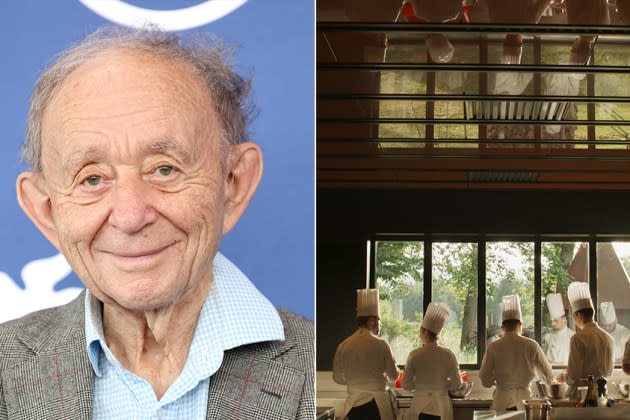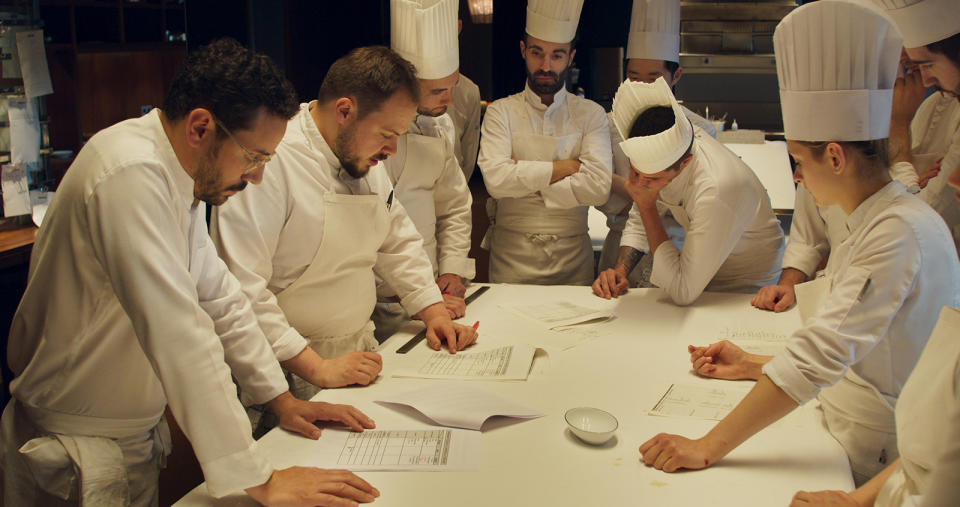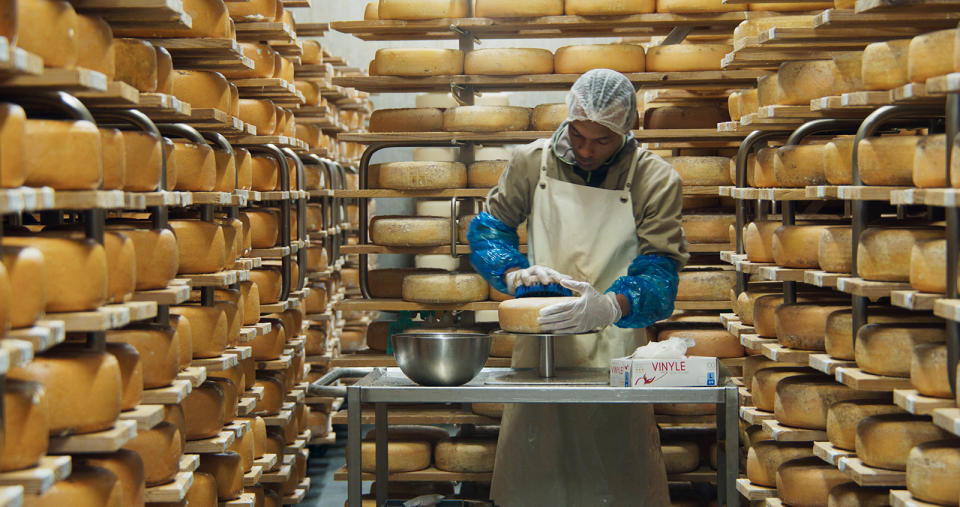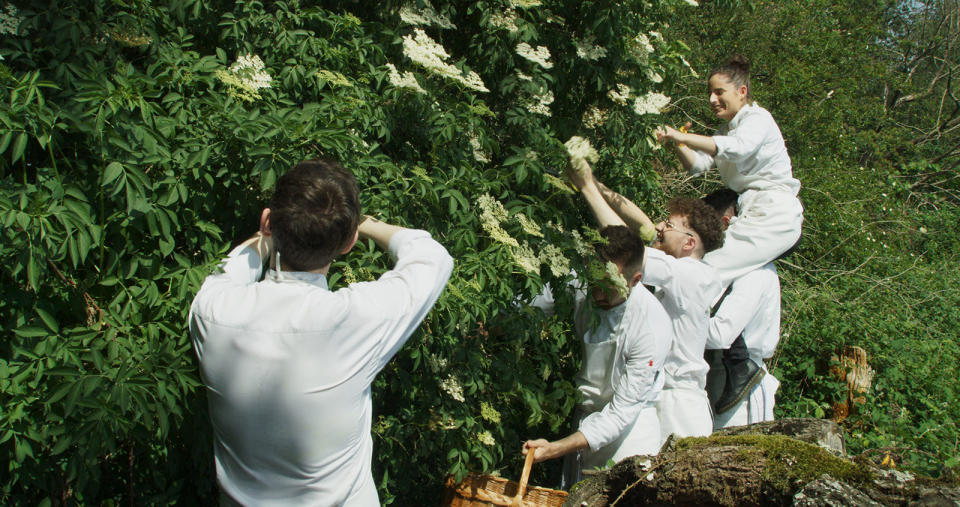How Frederick Wiseman Fulfilled a Lifelong Fantasy Making His Four-Hour French Restaurant Doc ‘Menus-Plaisirs – Les Troisgros’
- Oops!Something went wrong.Please try again later.

Documentary filmmaker Frederick Wiseman has filmed a lot of things — dismissive budget negotiations among UC Berkeley administrators, dead end conversations inside a New York welfare center, a live capuchin monkey being decapitated by scientists. But before he saw any of that, the Boston native saw Bill Russell win the NBA Finals.
“I shared season tickets to the Celtics with a friend, so every other game I went and the others I watched on the telly. As the expression goes, I go way back with the Celtics,” Wiseman tells Variety over the phone. “I happened to be at the game where Russell scored with five seconds left that gave them the championship. And I used to take my sons to the game.”
More from Variety
In previous interviews, the 93-year-old filmmaker has expressed that he doesn’t watch much TV beyond basketball and tennis. Now spending his golden years in France, he confesses that the time difference doesn’t lend itself to regular Celtics viewing anymore.
Another thing that Wiseman doesn’t watch: cooking videos. Perhaps that’s why the director’s latest and 44th documentary, “Menus-Plaisirs — Les Troisgros,” diverges from the sultry sizzle shots that have come to dominate food footage in the digital age. The film, which opens at Film Forum in New York on Wednesday before expanding to select markets, instead takes interest in process over product — the conceptualization of the cuisine, the generational passing of culinary traditions and the sometimes fussy, sometimes quixotic principles of the world of fine dining.
“I have never seen another movie about a restaurant,” Wiseman says. When asked if he sees that as coming into the project with purity, he chooses a different descriptor. “I come in ignorance. That’s all my films. I’ve never had to go into a welfare center or emergency wards … I approach all these subjects with a certain degree of open-mindedness or ignorance. Or both.”
Like all Wiseman features, “Menus-Plaisirs” luxuriates in its curiosity, splaying out across a four-hour runtime (only his fifth longest). He arrived at this project as a bit of a fan. In a statement to press, the director shared that “making a film about a three-star Michelin restaurant has always been one of my fantasies.” When interviewed, he says the idea first came to him when he lived in France as a student in the 1950s — years before he became a director, and long before he could afford to eat at such an establishment.
“One of the attractions of living in France is the food’s good … I am no expert on restaurants or food. I just like to eat at good restaurants when I can,” Wiseman says. “The fact that Troisgros had three Michelin stars for 55 years was a pretty good indication that it would be a good subject. My sense is that there’s no other restaurant that has had three Michelin stars for so long.”

The project took shape during the COVID pandemic — a period that Wiseman found creatively frustrating, as masks and social distancing posed obstructive forces to his fly-on-the-wall shooting style and interest in body language. After moving away from Paris to shelter at a friend’s house in Burgundy, he looked to express his gratitude with a fine dining experience. The gesture led him to Troisgros.
“After the meal, it’s traditional for the chefs to work the room and come to talk to the customers at the tables … Without planning to do it, I sort of blurted out, ‘I make documentary movies. Would you consider having one made in the restaurant?’” Wiseman says. “It came about like so many things in my life — by chance. I hadn’t asked any other restaurant. My documentary filmmaker spirit surfaced.”
Wiseman prepared for such clientele mingling to be the “trickiest” moments to shoot. Some of the biggest laughs in “Troisgros” come on the consumer side — a gushing American who inhales the scent of his wine nine or ten times in a row brought down the house at film festival screenings. But Wiseman didn’t find those folks to be camera-shy.
“Nobody turned me down. But that’s basic. That’s not unique to Troisgros,” Wiseman says. “It doesn’t surprise me anymore. It quickly became apparent that most people like the idea of being photographed.”
The filmmaker works to foster that amenable disposition in all his subjects. He looked to the restaurant staff to lead him to new sequences, such as a cheese factory tour detailing a sacred aging process, or a visit to a farmer affectionately raising cows to be sold as veal.

“I have to exercise my own judgment, but I’m also very dependent on people,” Wiseman says. “It’s a question of creating an atmosphere where the people at the place feel comfortable making suggestions. And I quite deliberately always try to do that because they know the place much better than I do. I don’t know it at all!”
The collaborative approach poses a question: What are Wiseman’s subjects eager to share? More pointedly, what do they believe would be interesting to see in a documentary? That unarticulated but ever-present performative slant colors all of Wiseman’s films, presenting a tension with the director’s unobtrusive and very unhurried style of shooting.
Wiseman says his agreements with his subjects are rather simple: he will respect if they don’t want something photographed, but the final cut is in his hands alone.
“The one thing that I always insist on in writing is that I have editorial control,” Wiseman says. “They acknowledge that that’s the most important part.”
As in the editing room, the filmmaker has also been fortunate enough to not have others dictate his projects.
“Nobody has ever imposed a subject on me. They never say we’ll give you the money to do this and not that.” Wiseman says.
Of course, choosing to document Troisgros had some unique perks.
“Oh, we ate there 70 times,” Wiseman says. “They’re open five days a week and we ate every lunch and dinner. I didn’t even gain any weight! There was a lot of activity.”

The director credits the late Irwin Young and his DuArt Film Laboratories with supporting his early work, a patronage that also boosted filmmakers like Spike Lee and Michael Moore at the onset of their careers. Young funded the processing of Wiseman’s first feature “Titticut Follies,” which documented life inside a prison hospital for the criminally insane. At first banned by the Massachusetts Superior Court in 1968, the year after its premiere, the documentary was selected for preservation in the Library of Congress last year.
Now, Wiseman’s primary patron saint is PBS. The broadcaster has been involved since his third feature, “Law and Order” (a cited influence by the Safdie brothers, the indie film in-vogue purveyors of urban adrenaline). PBS fronts about a quarter of Wiseman’s budgets now.
“It’s very important in itself. But it’s important also because it authenticates the project. Most of the money comes from foundations,” Wiseman says. “With the public television support, the fact that I can guarantee the film is going to be widely shown after its theatrical release has helped me.”
In previous interviews, Wiseman has expressed an agnostic attitude regarding who the audience for his documentaries is. But he still hopes to reach viewers — whoever they may be — far in the future.
“It’d be interesting for people several decades from now to watch a group of films made by one person about contemporary American life — and a little bit of French life,” Wiseman says. “There’s no guarantee that they will have historical value. But each of them deals with the way people speak and act, the clothes they wear, the experiences they have. Presumably, some of that will change.”
Best of Variety
Sign up for Variety’s Newsletter. For the latest news, follow us on Facebook, Twitter, and Instagram.

